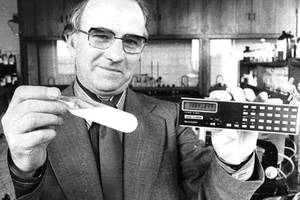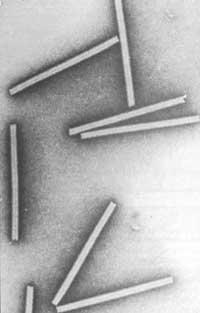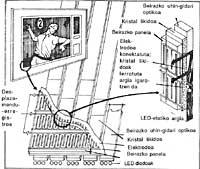Liquid crystals: towards a deeper understanding of matter
2023/09/01 Erkoreka Pérez, Aitor - EHUko Fisika Saila | Martínez Perdiguero, Josu - EHUko Fisika Saila Iturria: Elhuyar aldizkaria
In nature there are substances that have properties between solids and liquids: liquid crystals. Besides being very interesting from a scientific point of view, they are key in current technology. Recently a new type of liquid crystal has been found that has broken the schemas of scientists. It's a long story, and his quest to understand his physics is moving forward.
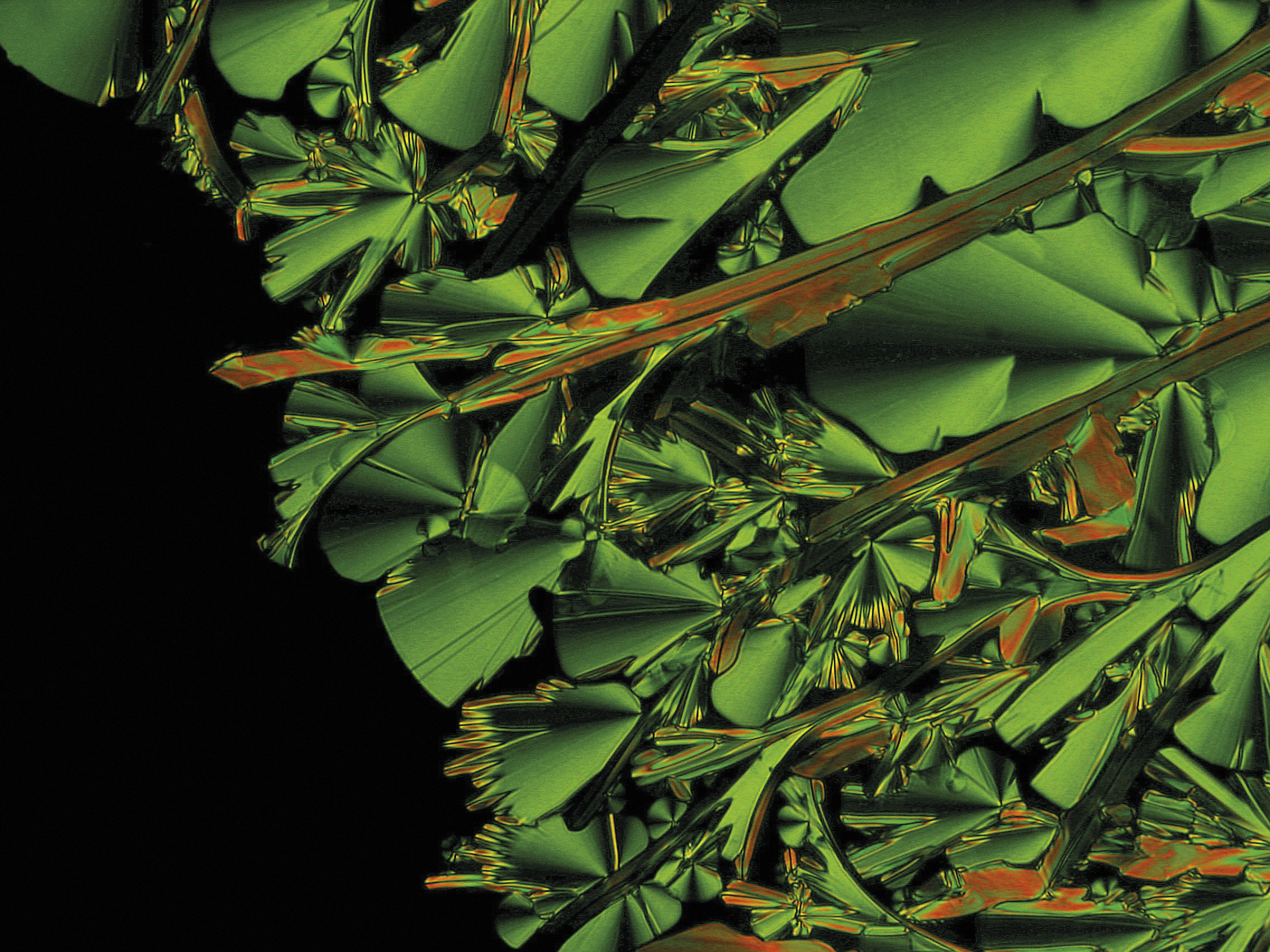
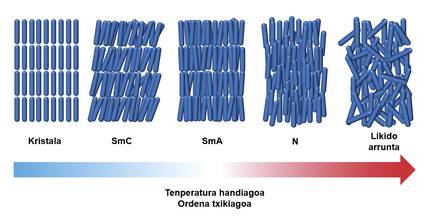
Since the discovery of the first liquid crystal in the 19th century, several sub-phases have been observed in the compounds that have been synthesized over the years, which are classified according to the structure adopted by the molecules. The liquid nematic crystals mentioned above, marked with the letter N, have only orientation order. Esmetic liquid crystals (Sm) also have position order. In fact, in addition to targeting molecules in a given direction, they tend to position themselves in parallel planes, always maintaining a certain fluidity. In the early 20th century, famous physicists Debye and Born have proposed the existence of a new phase [3, 4]: the ferroelectric nematic liquid crystal (NF). Although the molecules of common nematic materials are polar, the whole structure is apolar. That is, not all electric dipoles (separation of positive and negative loads) have to be oriented in the same direction, since molecular interactions do not separate the ends of molecules [5]. The ferroelectric nematic phase would be polar, that is, all dipoles would be oriented in a broken direction. After this theoretical prognosis, decades and decades passed by, but no material was found from the sacas. The only ferroelectric liquid crystals that were synthesized were skeptical, since the order of position of the moles facilitated the appearance of ferroelectricity. Aridity (low ranking) and ferroelectricity are mutually exclusive [6]. In fact, thermal agitation would be able to eliminate even the minimal ordination of far-reaching dipoles that could arise in the material. According to this statement, it was therefore not surprising that no such material was found.
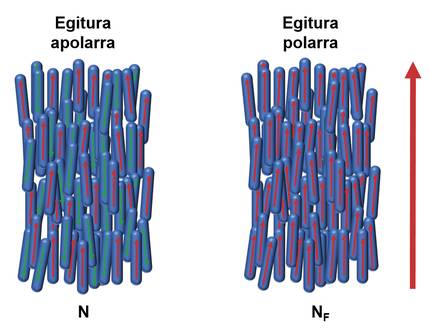
In 2017, however, several chemicals synthesized some curious compounds [7, 8]. The strawberries of these materials were very polar and at the temperature they observed a nematoco-nematic phase transition. However, the nature of the low temperature nematic phase was different. A research group studied the structure of one of these liquid crystals, known as RM734 [9]. The researchers proposed that RM734 has a local polar nematode phase. There would be polar domains with rotating senses in which moles would adopt an expansion structure (splay structure), that is, molecules would propagate radially from an origin. Although it was later found that this structure corresponds to another intermediate phase between phases N and NF, this preliminary study was important. In any case, scientists from the University of Colorado's Center for Research on Soft Materials were the first to propose ferroelectricity from this material in 2020 [10]. According to the Americans, this liquid crystal shows the NF phase predicted by Born with mostly crosscopic polar domains. These results have been confirmed by groups around the world, and molecules that have similar characteristics have been found. We can therefore say that a new state of matter has been found.
The challenge now facing scientists is to understand this new phase. What are the characteristics of the NF phase? What are the molecular mechanisms that allow the matching of dipoles? We, as researchers from the Department of Physics of the Basque Union, are trying to answer these questions. We use electrical methods to do this. In particular, we measure so-called dielectric sensitivity, both in terms of frequency of electrical arousal and temperature. This physical magnitude, in a way, quantifies the influence of an external electric field on a given mural. Although this variable is macroscopic, through proper data analysis, the mole processes of these materials can be investigated. In particular, in phase NF, the gigantic values of diaphanous permissiveness have been measured [11], the origin of which is unknown. By addressing these issues, we will better understand the nature of this mixed phase. Moreover, the interest of these materials is not only scientific, but also technological. Actually, NF can be useful for making more efficient displays, new electro-optical devices, etc. Finally, it must be borne in mind that the main characteristic of these compounds is their safety, that is, they are very sensitive to external electric fields. Therefore, it would not be strange if in a few years we all wore NF material on our mobile phones.
Bibliography
Aitor Erkoreka's thanks to the Department of Education of the Basque Government for the grant received through the Predoctoral Program for Training Research Staff Non-Doctor.

Gai honi buruzko eduki gehiago
Elhuyarrek garatutako teknologia




